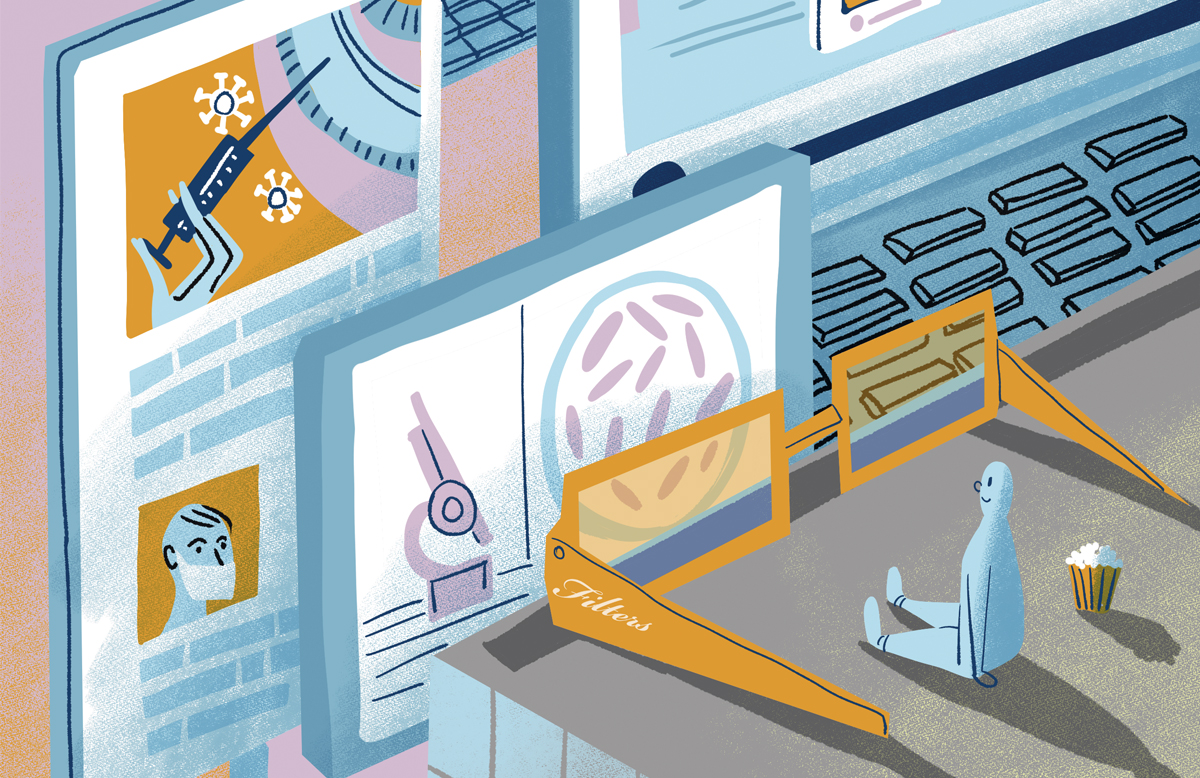
30 Jul Science Through a Glass Darkly
By Caroline Schneider, GROW Magazine
In the 1980s, the steps involved in a high school research paper assignment looked much different than today. Given a hot-button health topic of the time — perhaps the link between smoking and cancer or the emergence of HIV/AIDS — a student might peruse the stacks of a local library, question a doctor in the neighborhood, or lug an encyclopedia off a shelf at home. But today’s students, and most people in general, get their science information in quite different places: a story about artificial intelligence on their favorite news website or a video describing nanotechnology on TikTok.
These modern news sources apply filters to the scientific findings that decades ago would have only been gleaned from a book or heard directly from an expert. Today, science is viewed and analyzed through the lenses of personal beliefs, social standing, political views, and identity. And in the evolving terrain of media, news consumers gravitate toward sources expressing the beliefs and values that most closely match their own, and they get the bulk of their information from those outlets.
How do a person’s identity and values influence their choices of news sources? How do these personal traits affect their understanding of the scientific information their preferred sources provide? How can people who communicate about science cater to the various values and views of the public? Read more…



